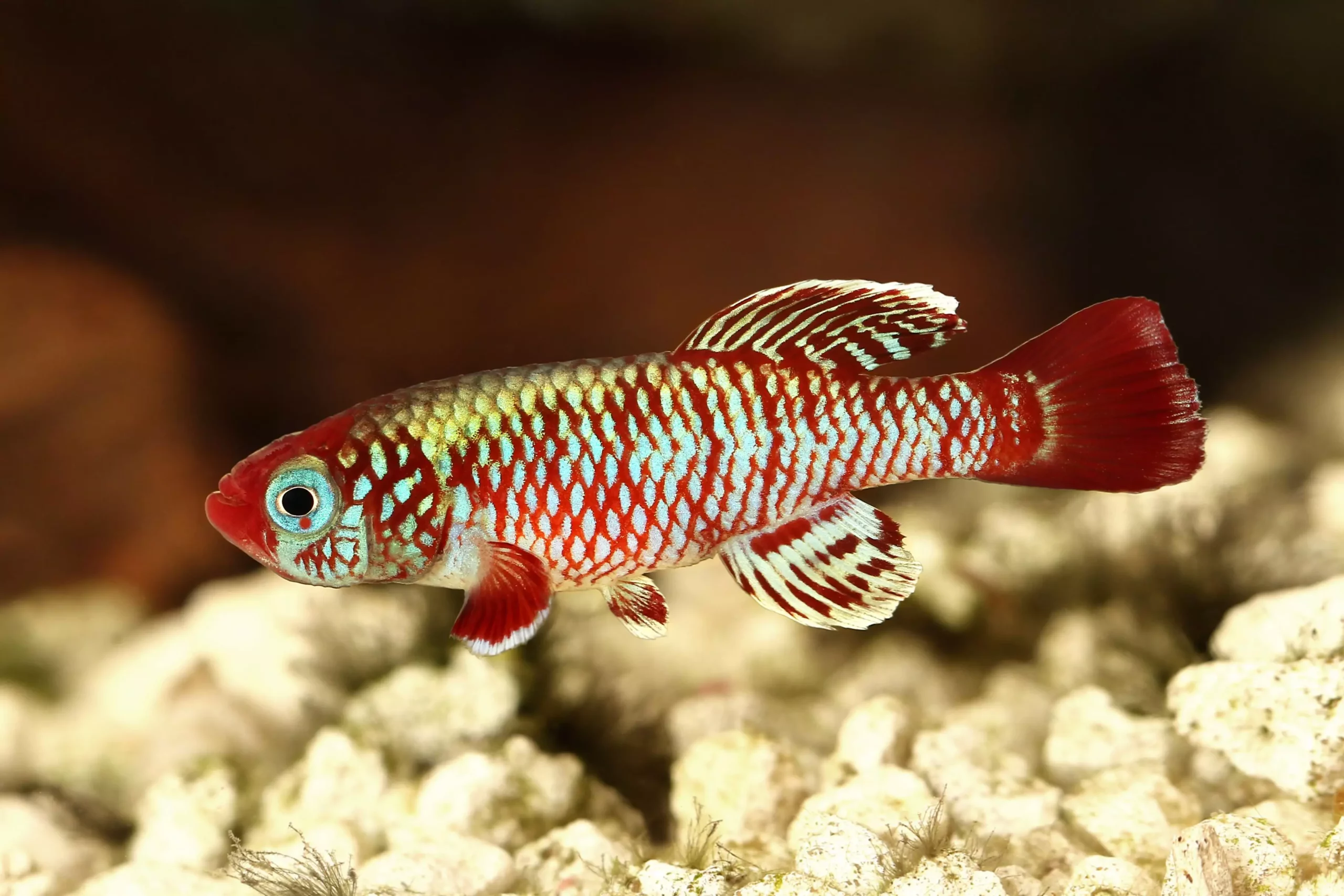Killifish, scientifically known as egg-laying tooth carps, represent a diverse group of freshwater fish that are often cherished for their distinctive reproductive strategies and vivid colors. While they are closely related to live-bearing tooth carps such as guppies and mollies, killifish demonstrate a remarkable difference in their spawning methods. Found across various regions—from North America through Central America to the southern tip of South America—these fish thrive in unique habitats that dictate their behaviors, lifecycle, and care requirements.
The natural habitats of killifish range from the tropical rainforests of Central Africa to African savannah ponds that undergo seasonal drying. This adaptability contributes to the evolution of two predominant spawning strategies: egg-hanging and egg-burying. The former, employed by species such as Aphyosemion, involves laying eggs among floating plants, providing the offspring with protection and sustenance until they hatch in the presence of water. On the other hand, egg-burial species like Nothobranchius bury their eggs in mud during dry seasons. This adaptation allows them to endure droughts, with some eggs capable of hatching after prolonged periods, adding depth to their life cycle.
The Allure of Their Appearance
Killifish are renowned for their vibrant colors and captivating fin shapes. Typically small in size, these fish exhibit a brilliant array of hues ranging from deep blue to striking red, often adorned with patterns that make them visually stunning. However, their beauty comes with a short lifespan, especially among annual species that live for just a season. These ephemeral creatures may fade quickly, but the joy of witnessing their striking colors can be profound for aquarists. Although they may not thrive indefinitely, they are an enchanting experience for hobbyists who appreciate their brief beauty.
To ensure the well-being of killifish in aquariums, certain water conditions must be met. They prefer softer, slightly acidic water with temperatures between 72 and 75°F (22 to 24°C). Unlike other fish, killifish require careful monitoring of water quality, as they are more sensitive to fluctuations. Aquarists are encouraged to replicate their natural environments by utilizing dark substrates like sand or fine gravel that help maintain optimal water chemistry. Access to low lighting through appropriate plant selection is also crucial, mirroring the dimly-lit waters of their wild habitats.
In terms of diet, killifish thrive on a varied selection of food, reflecting their predatory nature in the wild. They naturally consume insect larvae, making live foods their preference. Furthermore, aquarists can supplement their diets with high-quality dry flake foods, frozen brine shrimp, and bloodworms. While feeding them, maintaining diversity and quality is recommended as their health and vibrancy depend significantly on their nutritional intake.
Breeding killifish can be a rewarding endeavor, albeit one that demands careful attention. For egg-hanging species, creating a breeding environment with a layer of boiled peat moss can help stimulate spawning. The use of floating plants provides ideal spawning substrates. For egg-burying species, a deeper layer of peat is necessary to simulate natural spawning conditions. Ensuring the right male-to-female ratio—in general, one male to three females—can encourage successful breeding and minimize aggression. After spawning, the incubation process for the eggs differs among species, with some requiring prolonged periods of moist peat before reintroduction to water for hatching.
Considerations for Aquarists
While killifish can be delicate, they can thrive under the right conditions. However, they may not be suitable for all community aquariums due to their specific needs and potential aggression toward other species. Caution should be exercised to ensure a harmonious tank environment by selecting compatible fish and monitoring interactions carefully. Some species display aggressive tendencies toward one another, especially males during spawning periods, thus requiring strategic planning when stocking tanks.
Killifish are remarkable creatures that offer both beauty and complexity to any aquarist who dares to explore their unique characteristics. Their striking appearance, diverse breeding methods, and intriguing lifestyles beckon enthusiasts to appreciate their ephemeral nature. While they may require special care and conditions, the satisfaction derived from maintaining successful populations of this captivating species makes the effort worthwhile. With a little dedication, anyone can enjoy the fascinating world of killifish, whether through breeding, observing, or simply marveling at their ephemeral beauty.

